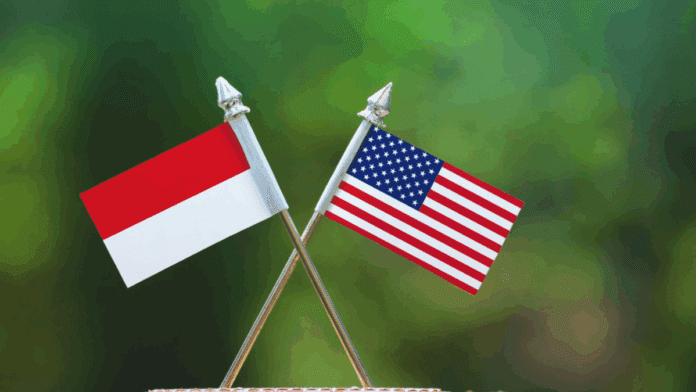The United States is stepping up its trade actions again. President Donald Trump announced a new trade agreement with Indonesia that includes a 19% tariff on all goods coming into the U.S. from the Southeast Asian country.
U.S. Hits Indonesia With 19% Tariff in New Deal
This decision is part of his plan to reduce the trade gap and bring more manufacturing jobs back to America.
Indonesia is not one of the U.S.’s biggest trading partners. Still, trade between the two countries reached nearly $40 billion in 2024. The U.S. imported a wide range of products from Indonesia last year, including electronics, palm oil, car tires, footwear, and seafood like frozen shrimp. But while U.S. exports to Indonesia rose slightly, imports grew even more, leaving a trade deficit of almost $18 billion.
Under this new deal, Indonesia agreed to several conditions. The U.S. will pay no tariffs on its goods going into Indonesia. At the same time, Indonesia will pay the 19% tariff on goods it sends to the U.S. The agreement also includes a promise to buy $15 billion in U.S. energy products, $4.5 billion in American farm goods, and 50 jets made by Boeing. However, there’s no set timeline for these purchases yet.
This new pact mirrors an earlier agreement between the U.S. and Vietnam. Like the Vietnam deal, it also includes a penalty for goods shipped from China that are rerouted through Indonesia to avoid tariffs, a practice called transshipment.
???? EU retreats—for now: €21B tariff blitz paused as Trump threatens Europe with economic war
A senior Indonesian official, Susiwijono Moegiarso, confirmed that both countries were preparing a joint statement that would clarify the tariff arrangements and commercial commitments.
Dozens of Countries Warned, More Tariffs Coming
President Trump also said more letters were being sent out to other countries with tariff details. These include places like Japan, Canada, Brazil, and others. Some of these letters warn of tariffs as high as 50% on specific products like copper. He mentioned that many of the smaller countries could face a general tariff of “a little over 10%” soon.
He told reporters that he preferred simple, blanket tariffs over long and complex trade talks. Still, his Treasury Secretary, Scott Bessent, and Commerce Secretary, Howard Lutnick, are pushing for more detailed trade deals with willing partners.
One of the most talked-about future tariff moves involves pharmaceuticals. President Trump said new tariffs on imported medicines are expected to be announced by the end of the month. At first, the rate will be low. But after some time, the tariffs could rise significantly to encourage companies to move drug manufacturing to the U.S.
Trump’s policy has caused a big jump in the U.S. average tariff rate. Before he returned to office in January, the rate was around 2% to 3%. Now, it could reach more than 20%, the highest level since 1933, according to estimates by the Yale Budget Lab. Even with changes in consumer spending, the rate is still expected to stay close to 19.7%.
Thailand Tries to Calm U.S. Tariff Fury with Open Market & $6B Safety Net
Europe Prepares $84 Billion Tariff Hit If Talks Fail
While Trump focused on deals with countries like Indonesia and Vietnam, the European Union (EU) was getting ready for a fight. The EU warned it may hit $84 billion worth of U.S. goods with its own tariffs if trade talks with Washington do not work out.
The list includes items such as Boeing aircraft, cars, bourbon whiskey, chemicals, medical devices, wine, and even fruits and vegetables. These goods are made by U.S. companies and sent to Europe. The EU said it is ready to respond to any new U.S. tariffs, especially the 30% tariff Trump threatened to place on European imports starting August 1.
The European Commission, which handles trade matters for the EU, sent its plan to all 27 member countries. The plan includes taxes on a wide variety of U.S. goods and comes in response to earlier U.S. moves, including the baseline 10% tariff already in place.
Despite all this, negotiations are still going on. The EU has said it wants a deal but is preparing to fight back if needed. The new U.S. tariffs, especially the ones aimed at major allies, have shaken global markets and caused concern about rising prices worldwide.
As the August 1 deadline gets closer, many countries are trying to strike last-minute deals with the U.S. to avoid higher tariffs. Still, Trump’s tariff threats and trade moves continue to reshape global trade in bold and unpredictable ways.
